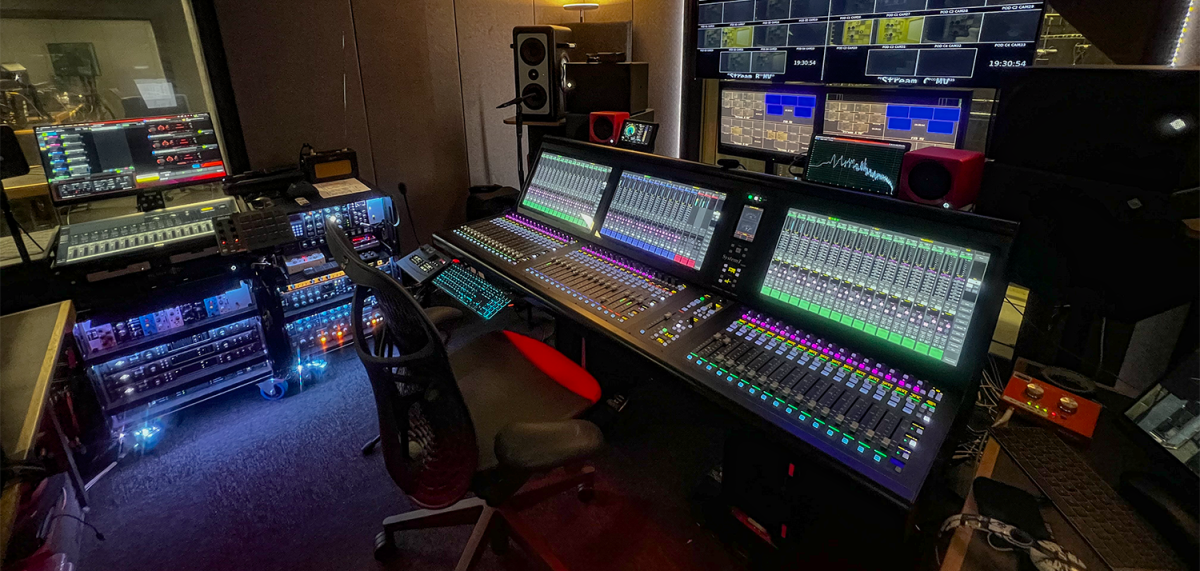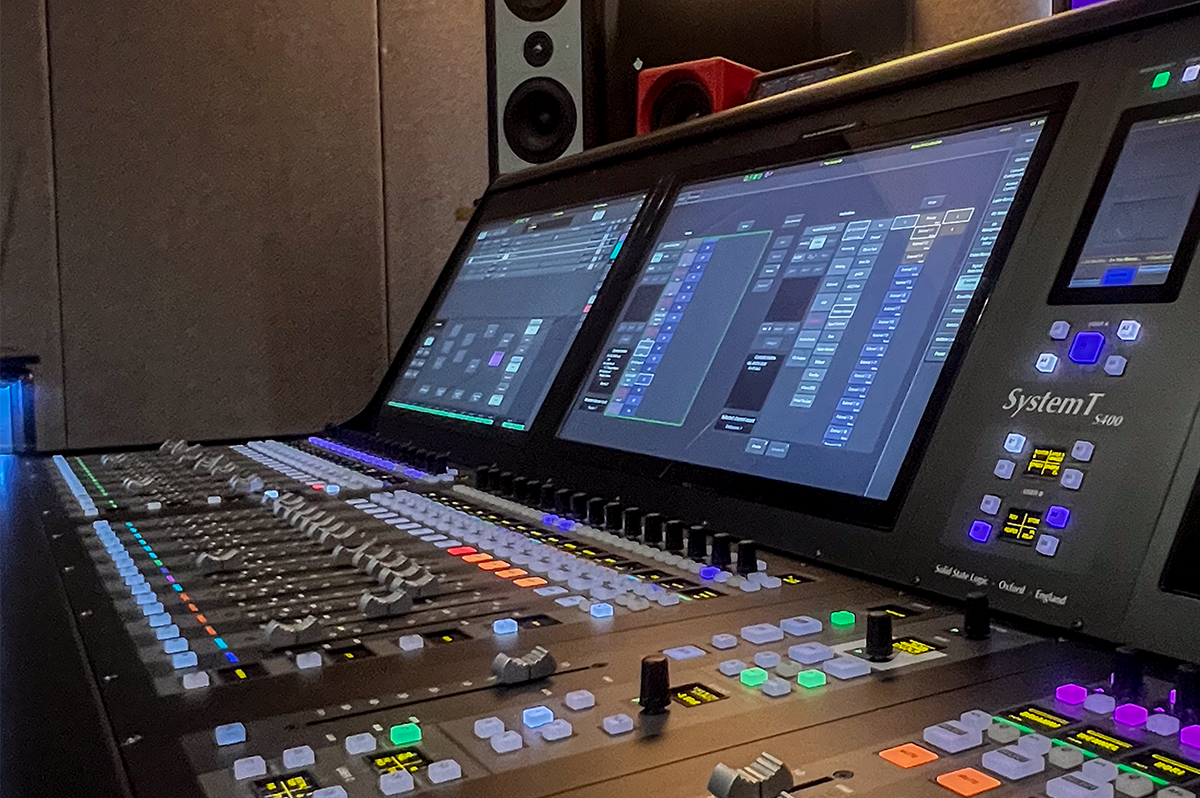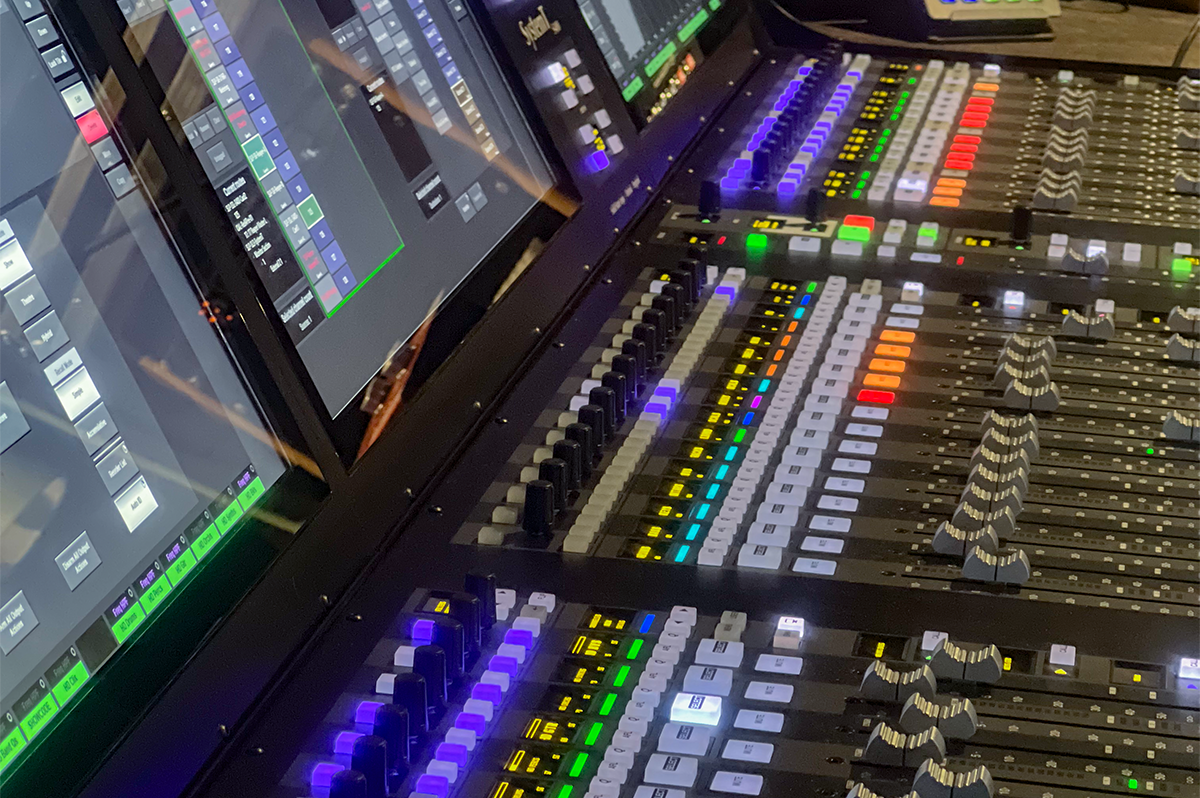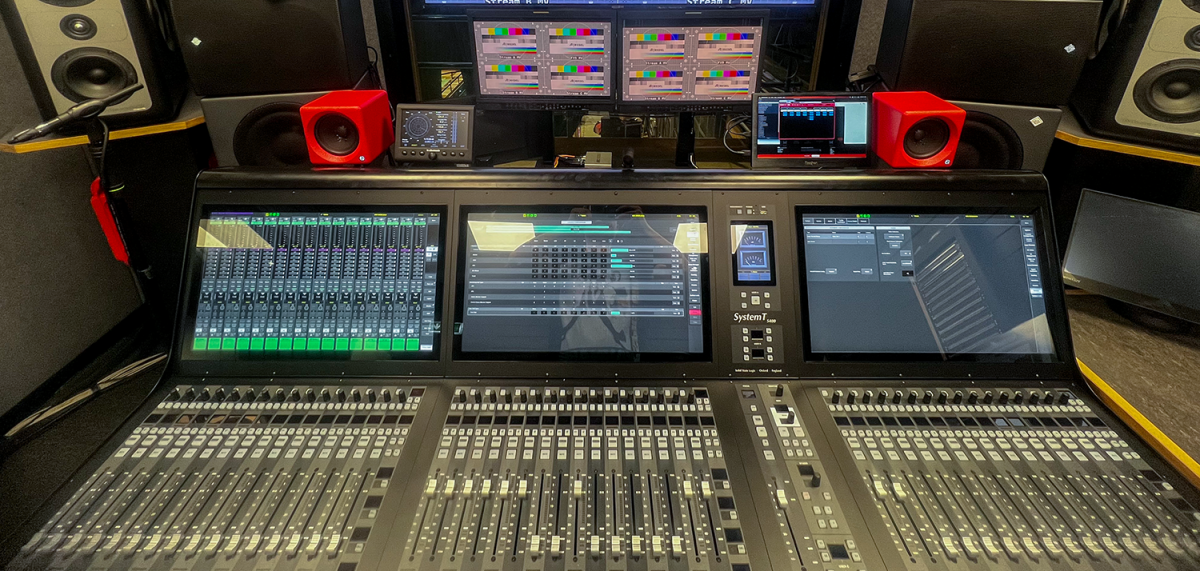Spiritland set up operations at Versa Manchester Studios, formerly the home of Granada Television. Building the Band, the first show to use Spiritland’s new audio control room, used multiple studios across the campus, as well as space across the street at Aviva Studios. The Spiritland team built out a massive Dante network for the show on Versa’s fiber infrastructure to feed dozens and dozens of reality dialogue and vocal radio microphones together with band and other inputs to the front-of-house and monitor consoles, the System T music console and a production console.
The initial house band rehearsal was canceled, Waton shared, so his first opportunity to use the S400 was on the opening day of production. “I'm quite familiar with Anthony's workflow in the truck, so I just dialed in approximate EQs, threw all the faders to zero and let the monitor guys gain-up all the preamps. The band started playing and I said, ‘There’s the mix.’ Since then, I’ve only had to do some light tinkering. System T, as always, sounds fantastic with minimal processing changes required.”
“We did the timecode over IP MIDI, and we have DAS installed,” added Shaw, referring to SSL’s Dynamic Automation System software option. “Ollie automated rehearsals to show code, so the live show was something of a hands-off experience.”
“It’s great that SSL offers a console with the compact form factor of their S300, but with the premium control we’re used to from our existing S500 console. The workflow, features and sound are identical, but now we can have the visual feedback we want in a compact package,” Shaw commented. “Obviously, the S400 sounds identical to the S500, the EQ is colourful and sonically correct to what we would expect it to sound like. But listening to Ollie's mixes on this project, the magic is in the digital summing buses glueing everything together.”
As for the form factor of the S400, which presents the fader tiles and screens in a compact frame suited to seated operation, “It's a really nice environment to work in with those screens at that angle,” Shaw said. “This surface is very, very easy to operate and everything is where you would expect it to be.”
System T’s dedicated Signal Switchers have been a benefit on the show. These provide the ability to rapidly switch between two sets of inputs, with the outputs routed anywhere that they are needed. As the series episodes progress, the dozens of contestants choose amongst themselves, sight unseen, to form groups of five singers. “But we never knew what order they were going to perform in,” Waton said. “We had two sets of microphones, gained everything the same and then whichever order they came up in the show, we just switched between A or B. But I didn’t to select multiple B inputs; I routed the A inputs for those faders via the signal switcher, so one button push and it's done.”
Because that toggling doesn’t affect the DAW replay inputs, he added, “I've got the Pro Tools op sitting behind me who pops into replay, we tidy up a vocal take straight after it happens, print it, and we're moving on.”
System T’s comprehensive FX Rack came in handy when Waton was mixing production feeds in an adjacent room. At the start of the show, contestants were in small, individual booths with a hidden omni microphone and a small speaker, allowing them to converse with others in their group. The automixer on that production console wasn’t up to the task, he said, and there was no onboard noise suppression. “I ended up dialing in an insert from the console on every channel via the FX Rack on the System T. I had 20 instances of noise reduction running on the S400 as inserts to the production board with all the mix-minuses post-automixer and post-noise reduction. It sounded totally dry, and you couldn't tell that there was a speaker in the room playing other people's voices. It was great.”
Spiritland Productions was founded in 2018 by ex-BBC engineers Antony Shaw and Gareth Iles, and it is a leading audio production company specialising in live and recorded music broadcasting. Since its inception, Spiritland has partnered with Solid State Logic (SSL), utilising industry-leading technology like the System T S500 in their Spiritland One OB truck and the newly acquired System T S400 for their Manchester studio complex. This ongoing collaboration ensures that Spiritland continues to set the benchmark for superior audio and operational excellence in broadcast production.
SSL will showcase the System T range at IBC, including the S500m and S400 consoles, and demonstrate how integration with the company’s Virtual Tempest Engine delivers cloud-native, software-based audio processing. Meanwhile, the company’s new ‘Plus’ range of Desktop Tiles expands the control functionality of the System T platform and also make their IBC debut.
Solid State Logic looks forward to meeting its customers and partners at IBC 2025 and will be offering live demonstrations during each day of the show. To learn more, register for IBC, or book an appointment with an SSL broadcast expert, please visit SSL's IBC event page.




